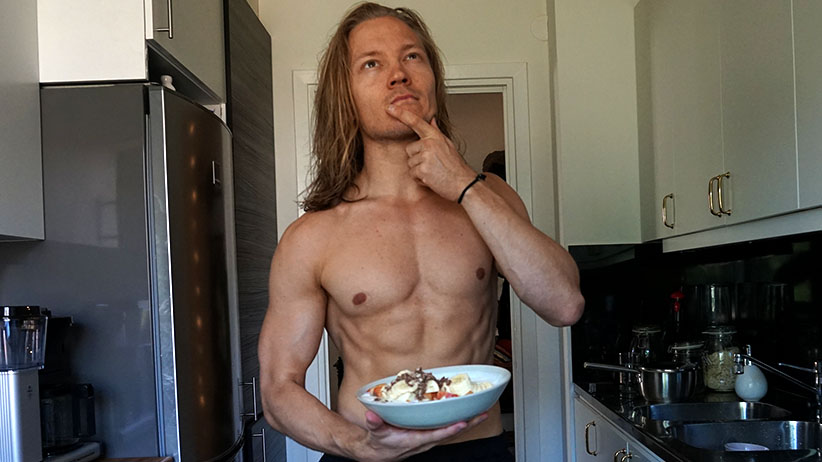
I think you agree with me when I say:
Dieting for fat loss is REALLY freakin hard…
Or is it?
Well, by learning the correct dieting strategies, you can actually turn the dreaded process of losing fat into a rather effortless task…
And in this post (and video) I’m going to show you how to diet for fat loss by utilizing the three most effective strategies.
These are strategies I use myself to get that ripped physique in the most enjoyable way possible…
…and after reading this post, so can you!
Table of Contents
How I Discovered These 3 Effortless Dieting Strategies
Before I show you the three strategies, let me share a quick story with you.
I’ve been able to maintain a more or less ripped physique over the last 6 months, rather effortlessly as well:

But, here’s the thing…
I wasn’t always able to look like this consistently.
In fact, I used to be known as the yoyo dieting guy.
When I started my journey of building my physique a few years back, I used to crash diet my way down to a low body fat percentage…
Not only was this a painful experience during the diet itself. But worse of all, immediately after I was done with my cut I quickly packed on all the fat again, and a bit extra… Keeping me skinny fat most of the year.
Here’s a picture of my earliest attempts of getting a ripped physique:
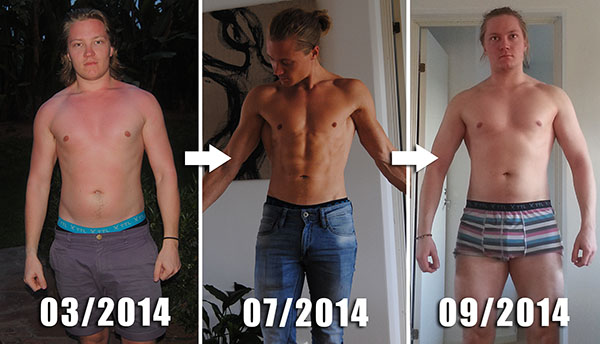
Then one day I stumbled upon a post on Kinobodys’ website called The Five Keys to Effortless Fat Loss. And that post completely changed my mindset around building a lean and muscular physique.
That’s when I realized that the process of fat loss (and muscle growth) doesn’t need to be hard…
In fact, as it turns out, the easier and more enjoyable you can make it, the more effective it becomes.
Dieting for Fat Loss Should Feel as Effortless as Possible
When it comes to setting up your diet for fat loss, you want it to feel as effortless as possible.
Why?
For a few reasons:
- You will stick to it more easily.
- You will be able to stay lean easier once you get down to a low body fat percentage.
- Getting to a lean and ripped physique will be a lot more enjoyable for you.
Okay, so with these things in mind. Let’s look at how to diet for fat loss using the three most effective strategies for getting a downright aesthetic physique in the most easy and enjoyable way possible:
Strategy #1: Counting Your Calories And Macros
No skill that I’ve ever learned, has been as valuable as counting my calories and macros in order to lose fat.
Sure, learning this skill takes a bit of practice, but it’s an important skill to have if you want to get a ripped physique in a very predictable and enjoyable way.
Not only that, counting your calories and macros allow you to take advantage of a strategy called diet periodization, which is where you successively slow down your rate of fat loss using refeeds and diet breaks as you get leaner overtime.
Most importantly though, this skill is what sets the ground pillar for the upcoming dieting strategies we’ll discuss in this article.
So with that said, here’s how to start counting your calories and macros:
Step #1: Find Out Your Maintenance Calories (TDEE)
There are many confusing calculators out there for calculating TDEE. But I’ve found the following simple formula to work just as well:
-Body Weight in pounds x 14-17
-Body Weight in kilos x 31-37
Use the lower number if you’re sedentary, use the higher number if you’re very active, and pick a number in between if you’re moderately active.
*This will just be a starting number and will most likely need to be adjusted later
Step #2: Set Up Your Caloric Deficit
Now, to get the absolute best results, I recommend that you base your caloric deficit after your body fat percentage.
However, this is more of an advanced strategy, which I explain exactly how to do in this article: How To Set Up An Optimal Caloric Deficit For Fat Loss
But, there’s a less advanced way to set up your caloric deficit number as well.
Which is to use a caloric deficit that’s:
-15-20 % below your TDEE (calculated in step #1)
Step #3: Set Up Your Macros
Protein
The best macronutrient to set up first is your protein. I recommend the following intake:
-0.8 grams per pound of bw per day
-1.8 grams per kilogram of bw per day
This is a bit lower than what’s typically recommended.
And there’s good reasons for that.
A lower protein intake per day will allow you to eat more carbs and fat, which comes with a bunch of benefits when cutting, such as:
- Higher testosterone levels
- Improved training performance
- Tastier meals
- Better well-being.
And these are all benefits that seems to of set any potential negatives of muscle loss following a lower protein intake. Especially for individuals who are “only” after a lean and muscular physique at around 8-10 % body fat.
Fat
Okay, so after protein we set your fat. I recommend that you eat:
-30-35 % of your total daily calories from fat.
Since you just set your protein a bit lower than what’s typically recommended, you can eat more fat, and this is great because of the benefits already mentioned.
Then finally, after you have set your protein and fat, the remainder of your calories left will be filled out by your carbs.
Now, if this sounds complicated, you can just download a free food tracking app, like MyFitnessPal where you can set all of this up directly in the app.
And you will also need the app for:
Step #4: Which is to Finally Start Counting Your Calories And Macros.
Inside an app like MyFitnessPal you have a food database that people all around the world adds to the app.
All you have to do is just search up the food that you intend to eat, or even use the built-in barcode scanner to scan the packages.
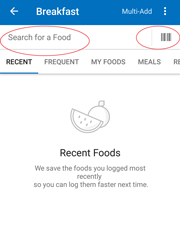
Then it’s just a matter of hitting your calories and macros consistently over time. And you should start losing fat.
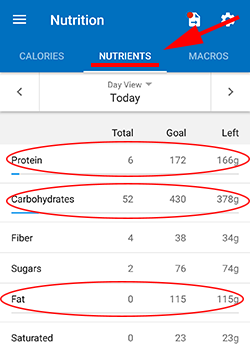
Okay, you’re now done setting up the things that actually matters when it comes to the diet, if you were to look at it on a purely physiological level:
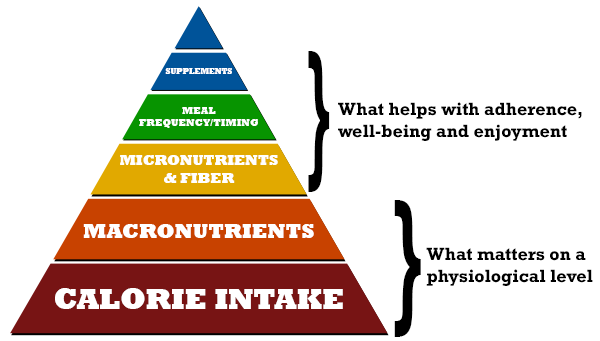
But, you want the diet to not only be optimal for fat loss, but also FEEL easy and enjoyable as well, right?
Well, then the following two strategies will make a HUGE difference when it comes to how effortless your fat loss phase will feel.
Strategy #2: Take Advantage of Flexible Dieting
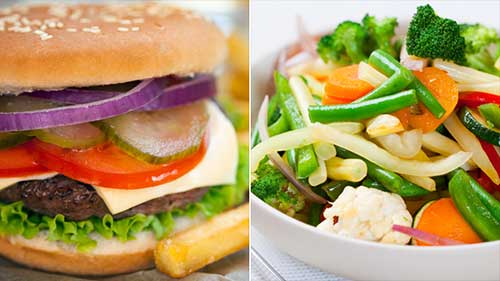
Now, flexible dieting is just as it sounds, you are being flexible with your diet.
And being flexible with your diet is extremely important if you want to achieve a downright ripped physique, while also enjoying yourself as much as possible in the process.
Why?
Because you can eat from all food choices, meaning no restrictions and no saying nooo to foods that you actually like!
And this equals a much less stressful and more enjoyable diet.
Now, flexible dieting is really more of a mindset than what it is a strategy. And the way that best describes flexible dieting are, to quote;
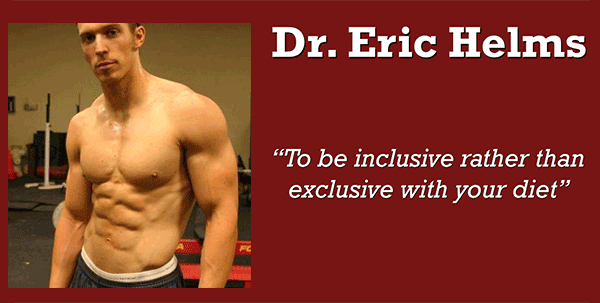
Why Being Inclusive Rather Than Exclusive With Your Diet is a Great Choice
An exclusive diet is where you, for example would strictly eat only chicken, rice and broccoli, day in and day out, except maybe for the occasional cheat meal(s) here and there.
And this is a very common way to diet in fitness circles.
In fact, when someone asks me; how to diet for fat loss?
Eating completely strict with the occasional cheat meal is typically the answer they expect.
But what they don’t realize is that having an exclusive mindset is often negative in the long-term… Especially if your goal is to get “lifestyle lean” and be able to stay there.
Why?
Simply, because it’s restrictive and not enjoyable. Which also makes it non sustainable.
On the other hand though.
By having an inclusive mindset towards your diet, you can remove tons of stress, and also enjoy life as much as possible while you lose fat at the same time.
With an inclusive mindset, you’re making yourself the one in control over your diet and not the other way around.
For example:
- Want to eat from the cake at your mother’s birthday party? Then no worries, just include it.
- Want to go see a movie with your friends and have a bit of junk food? Again, no worries, just include it.
As you can see, flexible dieting blends perfectly together with the first strategy; counting your calories and macros as well.
In fact, including some junk foods typically only works if you’re tracking calories and macros, because if you’re not, it’s very likely that you’ll overeat.
So, by taking advantage of counting, you can easily include enjoyable foods in your diet, while still seeing great results.
As long as you eat the correct calories and macros on a daily basis.
With that said though, you can’t overindulge on junk foods. And this is a very common mistake.
Your Diet Must Remain Healthy
In order to successfully build a lean and muscular physique, while keeping your health and sanity, you must make sure your diet is also healthy.
A lot of people see the concept of flexible dieting as being a freeway to eat tons of junk food.
But unfortunately, eating to much junk, such as ice cream, chocolate, candy, chips and so on won’t be sustainable long-term.
Because, even though calories and macros mainly are what determines fat loss and muscle growth in the short term.
In the long-term, you need a diet that contains a full spectrum of micronutrients, such as vitamins, minerals and fiber as well.
If you don’t get these nutrients, your health, performance and eventually your physique will suffer from malnutrition, and this is especially true when you’re also in a caloric deficit, trying to cut down to a low body fat percentage.
So, how do you avoid this while still getting the most out of your diet?
Well, you follow something called:
The 80/20 Rule of Dieting
This is where 80 % of your diet contain wholesome nutrient dense foods, and the remaining 20 % can be from lower quality foods.
Here’s a pyramid to keep in mind:

If you follow these guidelines, you will achieve a lot of dieting freedom, see incredible results with your physique, and feel great at the same time!
*Want to learn how to cook tasty and enjoyable fat loss meals, check out this post next.
How To Set Up Flexible Dieting
The way to be successful with flexible dieting is to plan ahead when counting your calories and macros.
For example; if you know that by the evening, you are going to an event where they will serve junk food.
Then make sure you eat mostly protein, veggies and other low calorie, highly nutritious foods earlier in the day.
This is to ensure that you’re getting in enough protein, micronutrients and fiber throughout the day, while at the same time keeping calories low.
By doing this, you just created tons of leeway in your diet for the evening, which enables you to eat some of the junk food as well.
Just make sure that you stick within your calorie and macronutrient budget, and you’ll be fine.
And this segues perfectly into the final strategy when it comes to setting up an easy and enjoyable diet for fat loss, which are to:
Strategy #3: Utilize The Power of Intermittent Fasting
Utilizing intermittent fasting is the number one most beneficial strategy for optimizing satiety and satisfaction when cutting down to a low body fat percentage.
Let’s look at why:
What you take advantage of when using intermittent fasting, is creating a food budget for later in the day, simply by eating less earlier in the day, that’s basically it.
People seem to think that fasting is something magical which makes you burn more fat, but this is false.
For fat loss to occur, you must be in a caloric deficit and eat enough protein, no matter how often you eat.
With that said though, the power of intermittent fasting lies in its ability to actually make being in a caloric deficit easier.
And here’s the deal:
Eating most of your food, including carbs, during the evening when cutting, is greatly beneficial on a psychological level, here’s a quick list of why:
1. Most People Find it Easier to Cut Back on Food Earlier as Opposed to Later in the Day
Don’t you agree that it’s easier to skip eating those cookies that lies in the cabinet during the morning than what it is during the evening?
2. Social Events and Gatherings Typically Take Place at Night
Having calories saved up for social events and gatherings makes dieting a lot easier. You no longer have to dread going to a party or eating out.
Because with the help of fasting you made room for it!
3. Feasting During the Evening is Highly Beneficial on Well-Being and Satiety at a Time When it’s Typically Needed the Most
Here’s a quick question…
What Would You Choose?
Option 1: Coming home from work, followed by a training session feeling drained, and knowing that you must resist eating food all night to stay lean;
or would you choose:
Option 2: Coming home from work, followed by a training session, this time feeling perhaps a bit more drained than option 1, but now you have a feast with family, friends or in front of your favorite tv-series to look forward to, all while staying lean?
4. Intermittent Fasting Saves You Time From Cooking and Eating Food
This might not be the biggest of benefits, but it sure has some merit. At least during the mornings.
Okay, so fasting sounds good and all…
But, what about during the fast? Won’t that be tough? Not to mention hunger?
Well, after you get used to fasting (which typically takes 1-2 weeks) you will start noticing the hunger reducing effects!
And this is the real power of intermittent fasting, and why it makes being in a caloric deficit so much easier.
These effects take place after upregulation of various hormones such as adrenaline, cortisol and growth hormone etc. that naturally occurs during the fasted hours.
And these hormones combined with low insulin levels (which also comes with fasting), puts the body in a state where it can effectively use its stored body fat as energy. This process make you burn more fat, by reducing your hunger!
Finally, with these 8 intermittent fasting tricks your fasted window will feel like a breeze.
It’s safe to say that intermittent fasting comes with a lot of benefits that makes sticking to a caloric deficit easier.
So I deceided to give you these three intermittent fasting schedule samples, including calorie and macro partitioning examples that you can use if you want to start utilizing intermittent fasting:
2 Meal IF Schedule
- Fast for 5-7 hours after waking up
- Meal 1:
- 30-40% of daily calories
- High protein, medium fat and low-medium carbs
- Meal 2:
- 60-70% of daily calories
- Medium protein, medium fat and high carbs
3 Meal IF Schedule
- Fast for 5-7 hours after waking up
- Meal 1:
- 20-30% of daily calories
- Medium protein, medium fat and low carbs
- Meal 2:
- 40-50% of daily calories
- High protein, medium fat and medium-high carbs
- Meal 3:
- 20-30% of daily calories
- Low protein, medium fat and high carbs
4 Meal IF Schedule
- Fast for 5-7 hours after waking up
- Meal 1:
- 20-30% of daily calories
- Medium protein, medium fat and low-medium carbs
- Meal 2:
- 20-30% of daily calories
- High protein, medium fat and medium carbs
- Meal 3:
- 20-30% of daily calories
- Medium protein, medium fat and medium carbs
- Meal 4:
- 20-30% of daily calories
- Low protein, medium fat and high carbs
*These are only examples to provide some guidelines. You can start with them, but ideally experiment to find what suit you the best.
Screenshot or bookmark this page to make sure you got the templates accessible!
Conclusion – How to Diet for Fat Loss
Dieting for fat loss is easier than you might think.
As long as you use the correct strategies and set them up correctly!
Throughout my fitness years, I’ve experienced yoyo dieting syndrom, I’ve gone on multiple crash diets, and I’ve been experimenting with all kinds of dieting fads.
It wasn’t until I found these 3 strategies mentioned in this post, and executed them correctly that I finally found the dieting freedom I was searching for while also seeing great results.
The strategies work.
And boy do they work well for getting and staying ripped in the most effortless and enjoyable way possible!
If you want to read more about getting lean and muscular without giving up on your life in the process, then check out the complete guide: how to go from lean and muscular while keeping your lifestyle here!

Exercises which support muscle strength, light flexibility and endurance are included in the rowing machine. It focuses maintaining heart energy and natural position. These exercises can play an significant part in athletic training and physical rehab.